Hello and welcome to episode 7 (part 2), as previously promised. Last time, we had just been on the first of our three ‘big’ outings, interstate as it were (inter-prefecture???). Our next two ‘big’ outings also took us to places we had meant to go for some time but just hadn’t got around to it, for reasons of weather (ie too cold/snow on the roads, etc), time (all three of the journeys were day trips) and money…
Before I get onto them, I must mention how wonderful the weather has been since I last wrote. Barring a couple of days, the weather has been in the 20s and not particularly humid (I have all my fingers and toes crossed when I write this, which makes it difficult to write but I know the humidity is coming and I don’t want to hurry it along!). I’m hoping the weather will remain like this for a while longer, because we haven’t really had much spring weather since we have been here (or autumn weather for that matter). It seems as if summer and winter are just getting longer, subsuming the other two.
So,our next ‘big’ outing took us to Hikone, in Shiga prefecture, specifically to see the castle there. Hikone is one of the towns lining the shores of Lake Biwa, which is the largest freshwater lake in Japan. Apparently it is one of the oldest lakes in the world, dating to at least 4 million years ago. Lots of interesting archaeology there, no doubt.
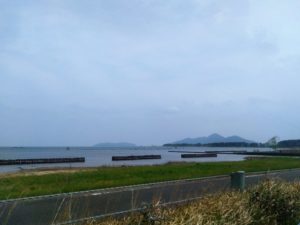
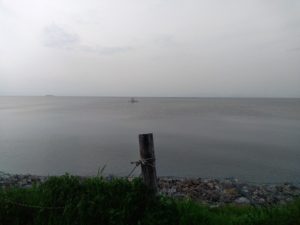
Anyway, we took a route that did not involve toll roads to get there which took us over a bridge spanning a narrow part of the lake near Otsu city. As we started over the bridge, I started hearing some music and wondered out loud where it was coming from. We quickly realised it was being made through the tyres of our car running over grooves on the bridge!! It lasted for the entire span of the bridge (1.4km) and was truly an amazing experience. I think the song is called Biwako Shuukou no Uta (literally: Lake Biwa circumnavigation song).
Hikone castle is one of only 12 castles in Japan with the original keep, and it is one of only five castles listed as a national treasure. It was opened for use in 1622, although the keep was originally built in 1575 as part of Otsu castle and later moved to its current position by the Ii clan, who also moved their original castle (Sawayama castle) to this site and added other parts from Nagahama castle. As an aside, it constantly amazes me how many complexes here, including castles, are amalgams of buildings and parts from other sites, some a long way away. Otsu is approximately 70 kms by road from Hikone, though they possibly could have taken it via barge on the lake, I suppose.
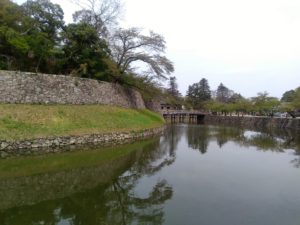
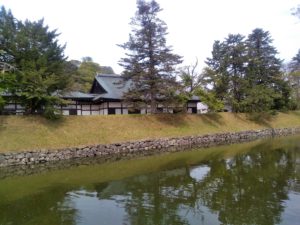
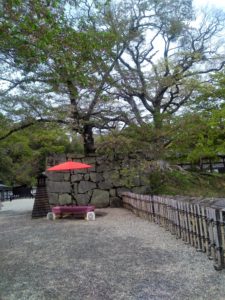
The castle complex comprises a museum as well as the castle itself. We went into the museum first as it was outside of the main entrance to the castle proper. There were some very interesting exhibits in there, along with a fully functioning Noh theatre, where performances are still held. This stage was originally part of the residence of the Ii clan at Hikone Castle and was subsequently moved to the castle Museum and reconstructed in its original layout. It is said that the Ii clan were great lovers of Noh.
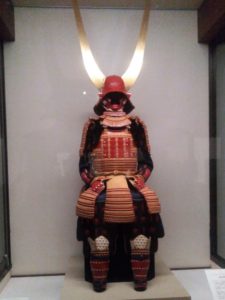
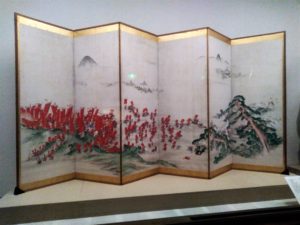
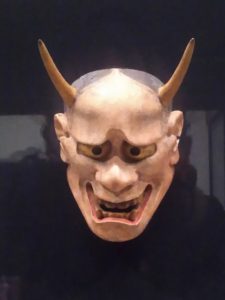
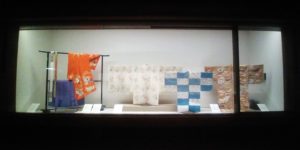
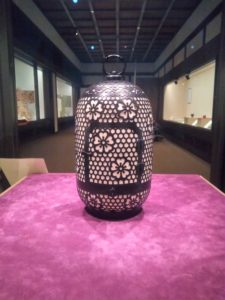
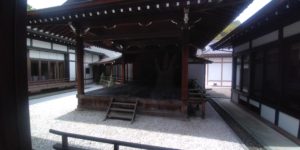
After, we climbed to the main castle area, which includes the keep and surrounding gates and buildings. It was a bit of a climb up many stairs with no ramps, so was quite difficult for the oldest member of our group, who is 92. In the end she didn’t make it all the way up, but gave it a good try 😊. It is a beautiful castle and the views up there of the lake and surrounding hills is lovely. Inside the main keep, as is the case with so many around Japan, the stairs were incredibly steep. How anyone would manage to run up and down them during a battle is beyond me. After we left the castle, we stopped and had lunch on the lake shore, which was most pleasant.
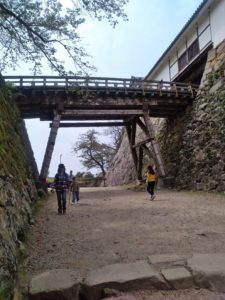
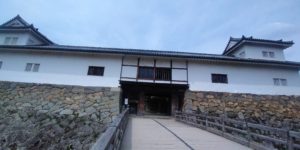
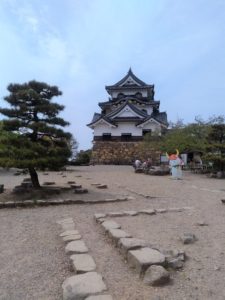 Note the mascot in the foreground
Note the mascot in the foreground
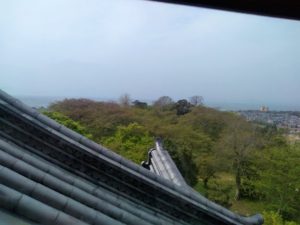
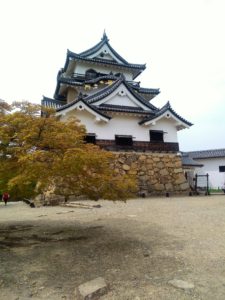
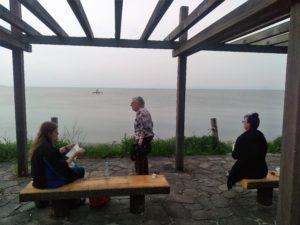
Next day we headed off to Miho Museum, which is located near the town of Shigaraki in Shiga prefecture. The museum was the vision of Mihoko Koyama (after whom it is named), who is the founder of a religious organisation known as Shinji Shumeikai. She commissioned the building of the museum in the 1990s and it was officially opened in 1997. The museum houses Mihoko Koyama’s private collection of Asian and Western antiques bought on the world market. There are over 2,000 pieces in the permanent collection, of which around 250 are displayed at any one time.
The museum complex is s stunning design which fits in with the landscape, while being large enough to house the collections and having a Japanese ‘feel’. The complex comprises a reception building, a restaurant and shop and the main collection building, which you get to via a tunnel through part of the mountain. The architect who designed the museum was I. M. Pei who has also designed many other well known structures internationally, including the glass and steel pyramid at the Louvre. His design was effected in the hilly and forested terrain and he apparently came to call it Shangri-La. Approximately three-quarters of the 17,400 m2 main building is located underground, carved out of the rocky mountain.
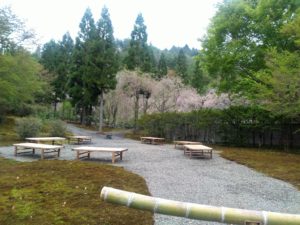
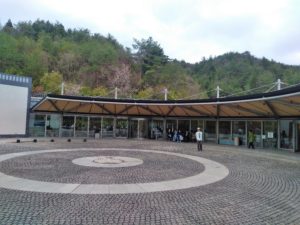
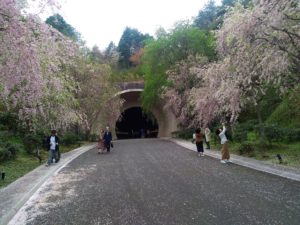

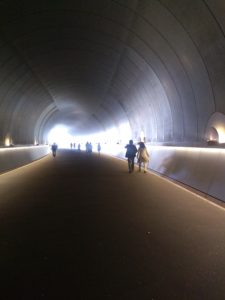
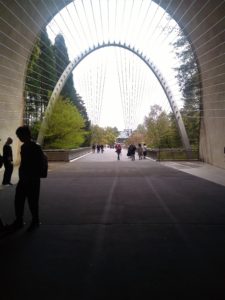
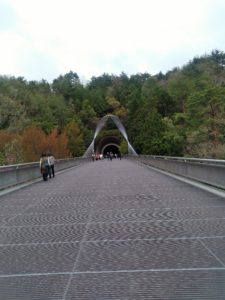
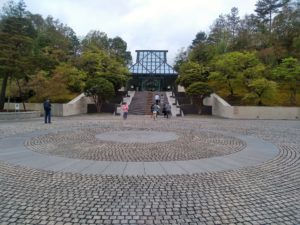
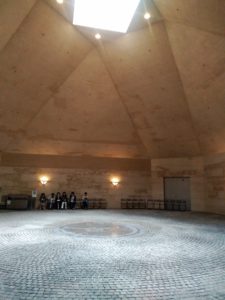 The bus stop for the electric bus
The bus stop for the electric bus
There was a special spring exhibition at the time we went, entitled Living in Zen and the Daitokuji Ryōkōin Heritage. This consisted of an overview of 400 years of the Ryōkō-in temple’s history and also featured the Tennōjiya family treasures, Abbot Kōgetsu’s belongings that reflect the aesthetics of the Kan’ei era, works associated with historic figures the abbot revered, and objects owned by successive abbots of the temple.
After we viewed the exhibition and the permanent collection pieces, we headed back to the restaurant for lunch, which they kindly served us despite it being just before closing time. They had a mainly vegetable menu, although none of it was fully vegetarian or vegan. Once we asked if they had any options, they said they could make us a couple of dishes without fish stock and later asked us if we would prefer noodles made without egg. It was a very nice meal and they really were very helpful and accommodating.
On the last day of Steven’s visit (his friends had left the day before), we went to a festival in Okazaki park, which Craig had found out about via Instagram. When we got there it was like a walk back in time to a hippy festival in the late 1960s. There were many vegan/vegetarian food stalls and other stalls with mostly locally made items, as well as a line-up of musicians playing throughout the day. As we got there, there was a woman playing a keyboard and singing – and I use that term in the sense that she was trying to do so, since I think I could have carried a tune better than her – so, at that point, I was a bit concerned about the music side of the festival.
Following that assault on our ears and a brief respite, a band started playing, and very loudly at that, but they were amazing!!! They looked and sounded like they had just stepped out of San Francisco circa 1967. They all had very long hair and were playing very psychedelic style music. I have to say, though, that it was so loud it was hard to buy things at the stalls which were close to the stage area. Despite this, they were so good we watched them until they finished up (each band/individual played for around 30 minutes).
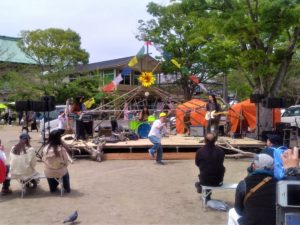
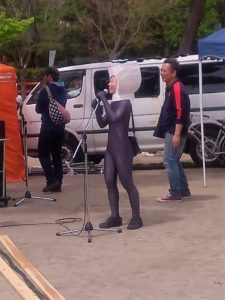 What the?
What the?
Feeling hungry, because the food looked so good, we bought some vegan burgers and sat to have a very delicious lunch. Following this we continued around to the rest of the stalls and bought some more food items (they really were very nice – we had them for dinner later that day). As we were thinking about leaving, the next band started setting up and they were also dressed up, but this time much more Marc Bolan-esque; very glam. While they were still setting up, the lead guitarist was wandering around on stage playing bits and pieces of songs, some of which sounded rather like T-rex songs. He was very good and so we decided to hang around to see what they were like.
The lead guitarist turned out to be the lead singer and he was a brilliant showman (very funny too). Some of the songs weren’t as good as the warm-up promised, but they were very entertaining and very good musicians – two women (bass and keyboards) and two men (guitar and drums). Again, the music was very loud, but it didn’t seem to worry the varied crowd. They were enjoying the band a lot and were getting into the songs, singing along and even making appropriate hand/arm movements. Needless to say, we watched the whole set, which was fantastic fun.
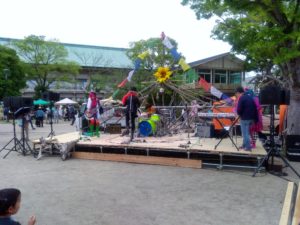
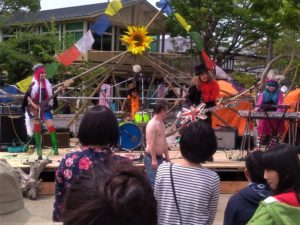
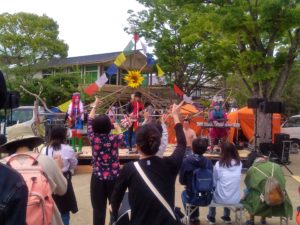
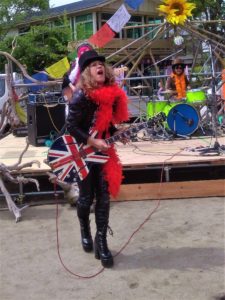
After that – the beautiful weather, wonderful food and great entertainment (except that one “singer”) – we decided to walk back via one of the canals, which is a lovely way to pass time too. It was so pleasant, we stopped at a small café along the way, had a drink and watched the world go by for a while. What a wonderful way to spend a day. I so love spring 😊.
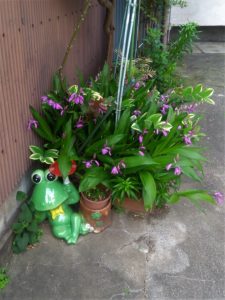
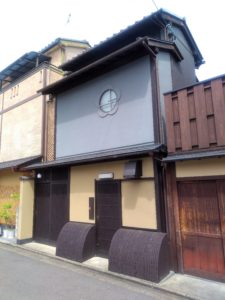
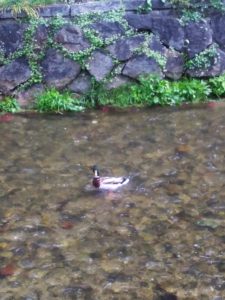
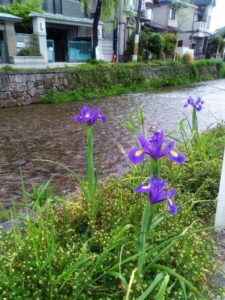
The duck just stood there (yes stood on the bottom) quacking at me…
Before I sign off, I thought I should mention that the new emperor is now ensconced in the palace. Interestingly, though, the official enthronement ceremony is being held later this year, at which international dignitaries will be present. As a result of the abdication and transition to the new emperor, we are now into the Reiwa era, which officially commenced on 1 May. So, for official forms, the year is now Reiwa year 1. Up until the end of April, we were in Heisei year 31. A somewhat complex system, where you need to know not only the world standard year, eg 1970, but you also have to know the Japanese era and year of the era, eg Showa year 45, for 1970. So, here we are in year 1…Happy New Era!
Cheers
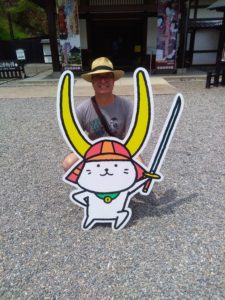
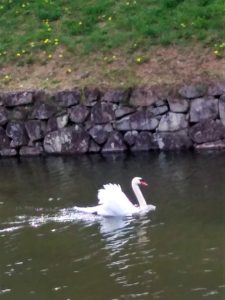
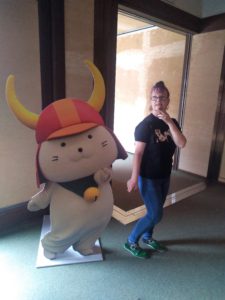
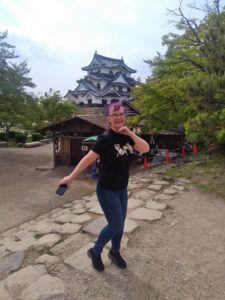
Hikonyan and Craig / the ‘royal swan’ / Hikonyan and me / me as Hikonyan (sort of)
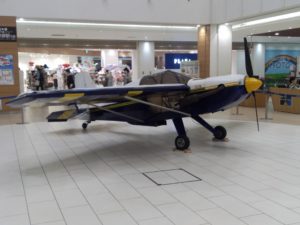
A plane inside Aeon Mall…
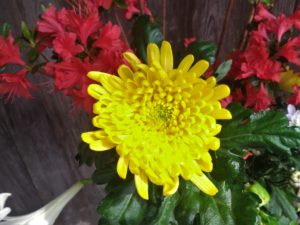
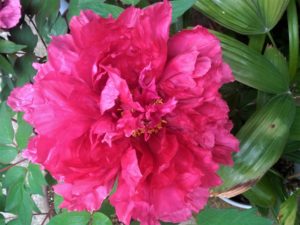
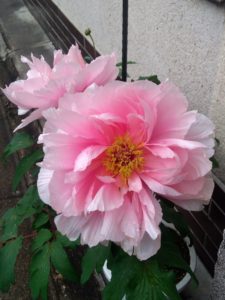
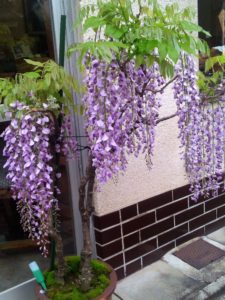
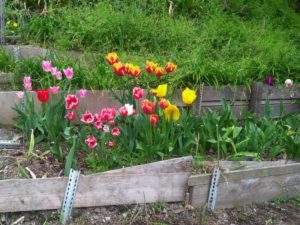
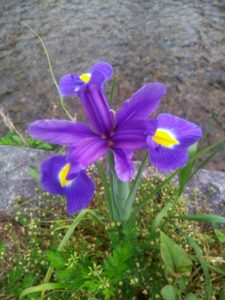 Ah, Spring
Ah, Spring
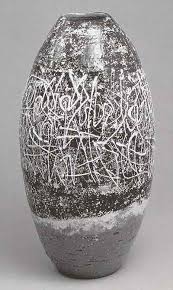
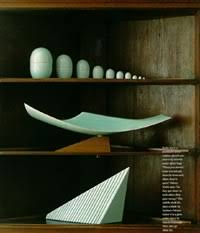
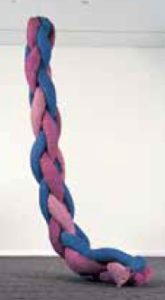
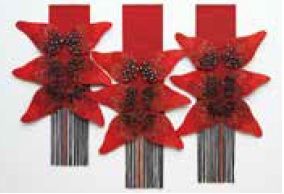
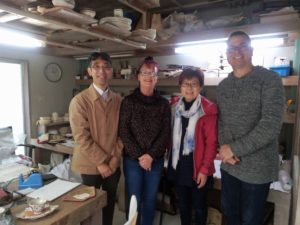
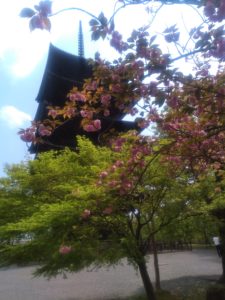
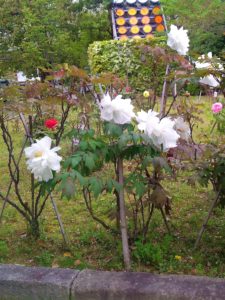
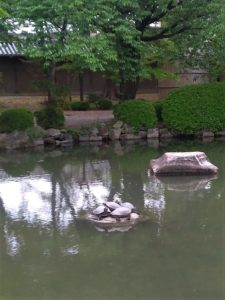
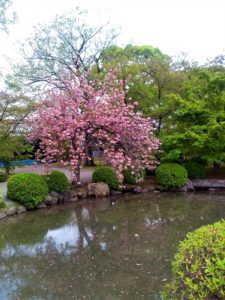
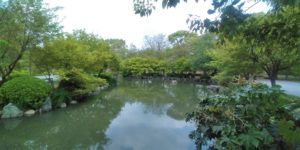
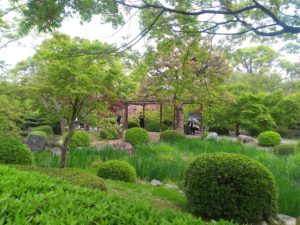
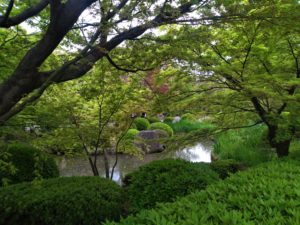
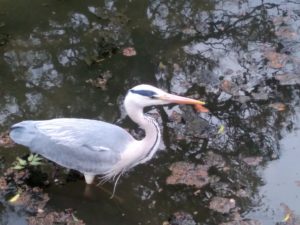
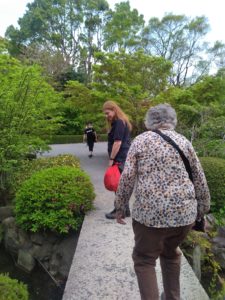
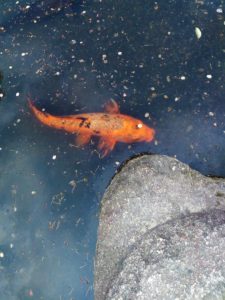

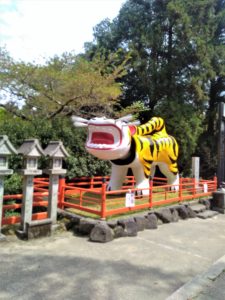
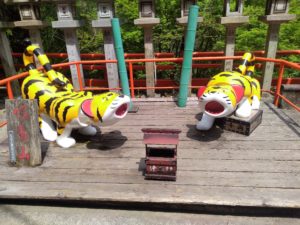
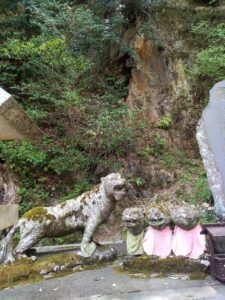
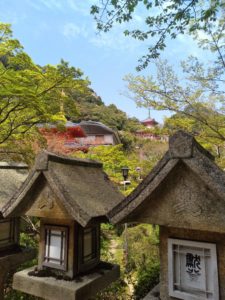
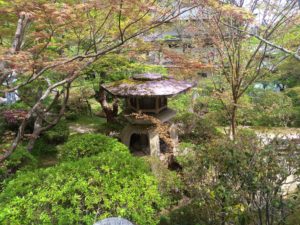
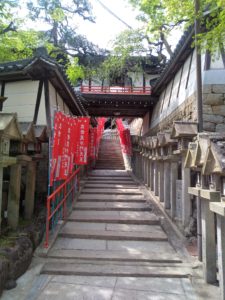
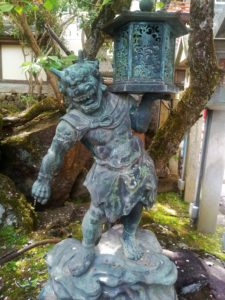
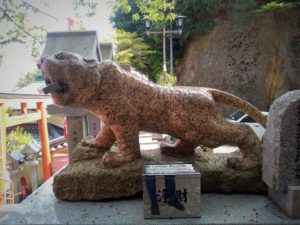
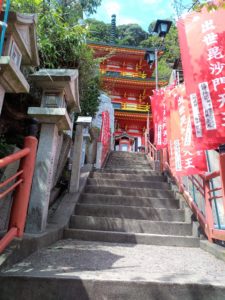
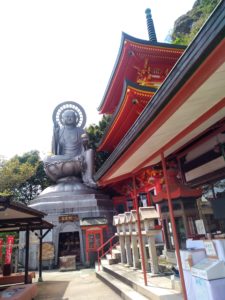
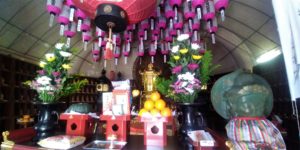
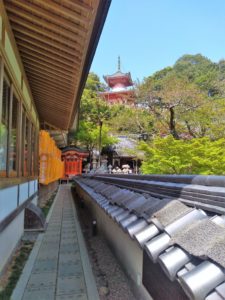
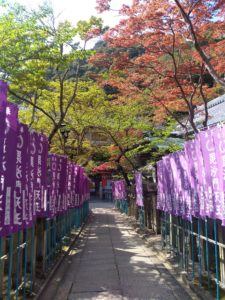
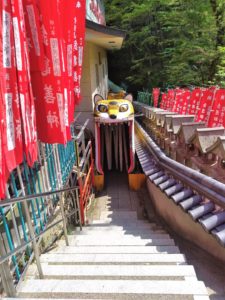
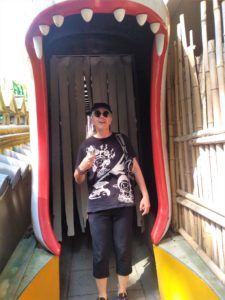
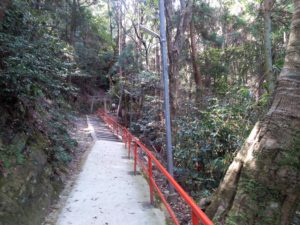
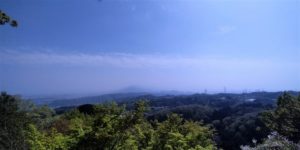
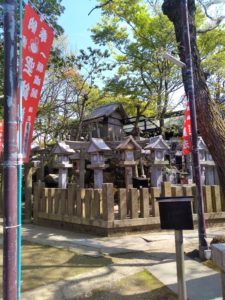
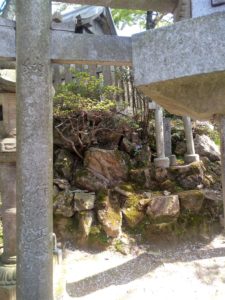
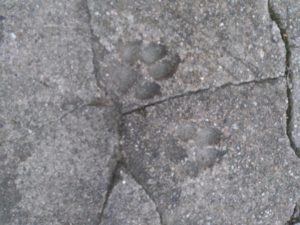
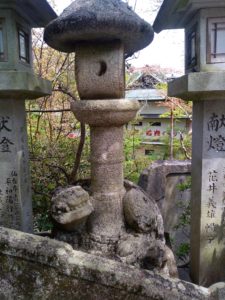
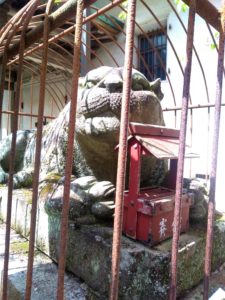
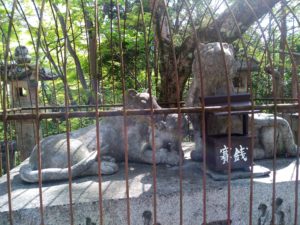 Cages for statues?
Cages for statues?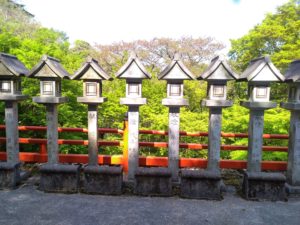
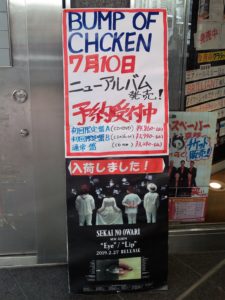
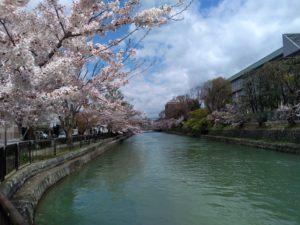
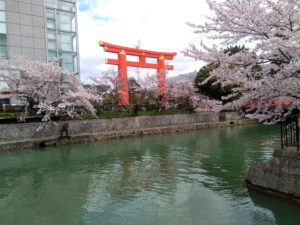
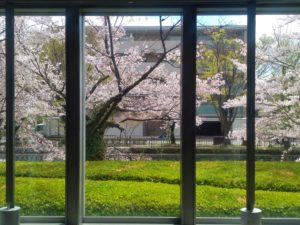
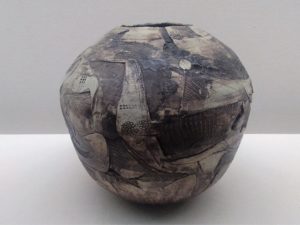

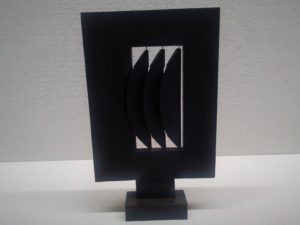
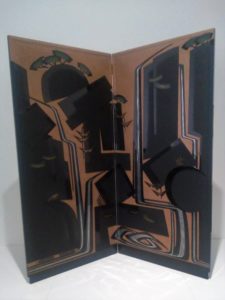 Other random items at the gallery
Other random items at the gallery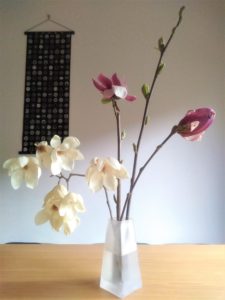
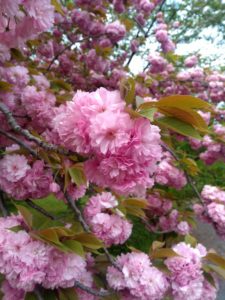
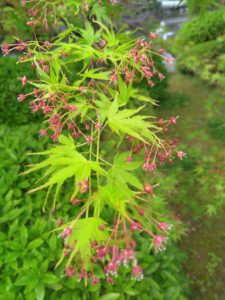
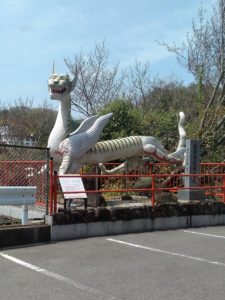 At the entrance to the car park
At the entrance to the car park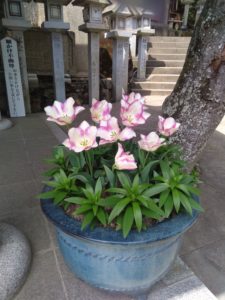
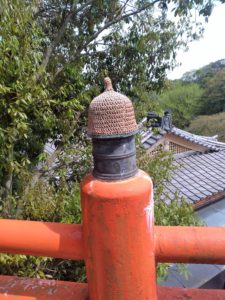 It was cold????
It was cold????